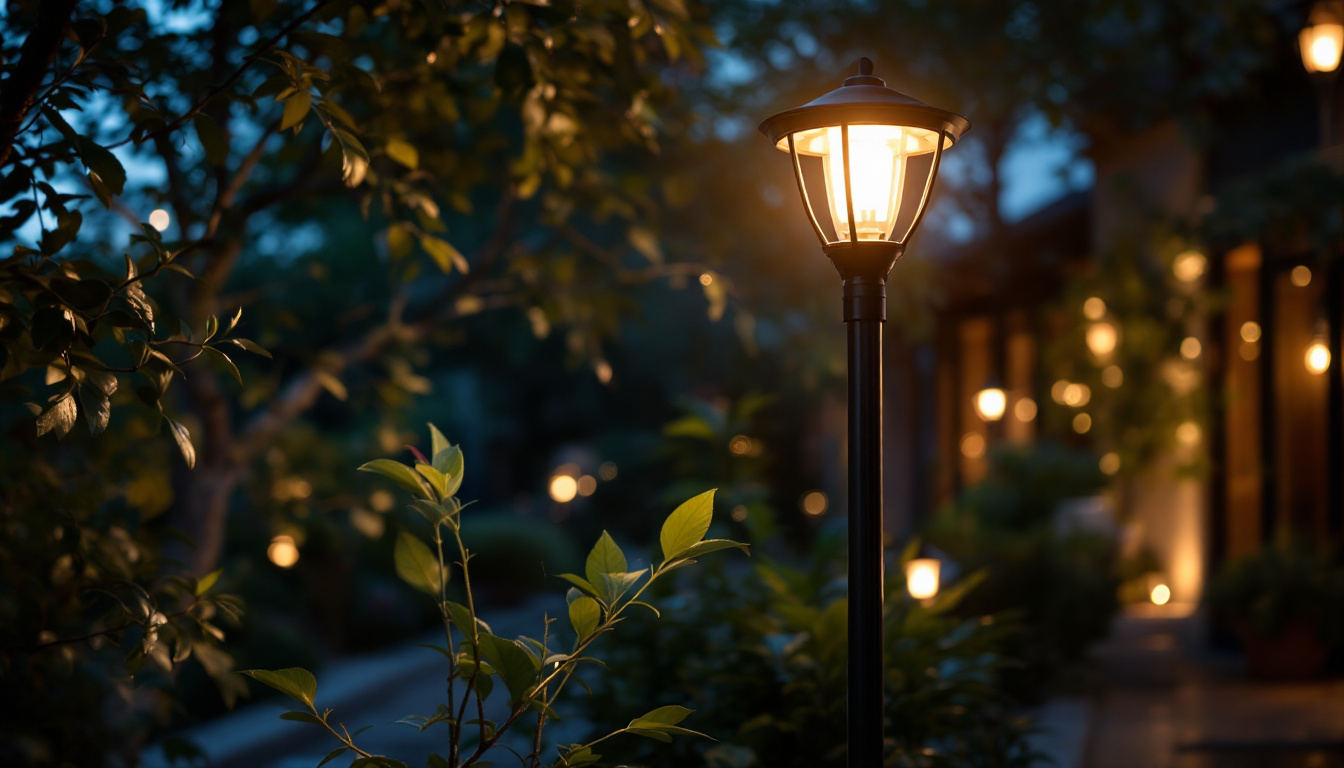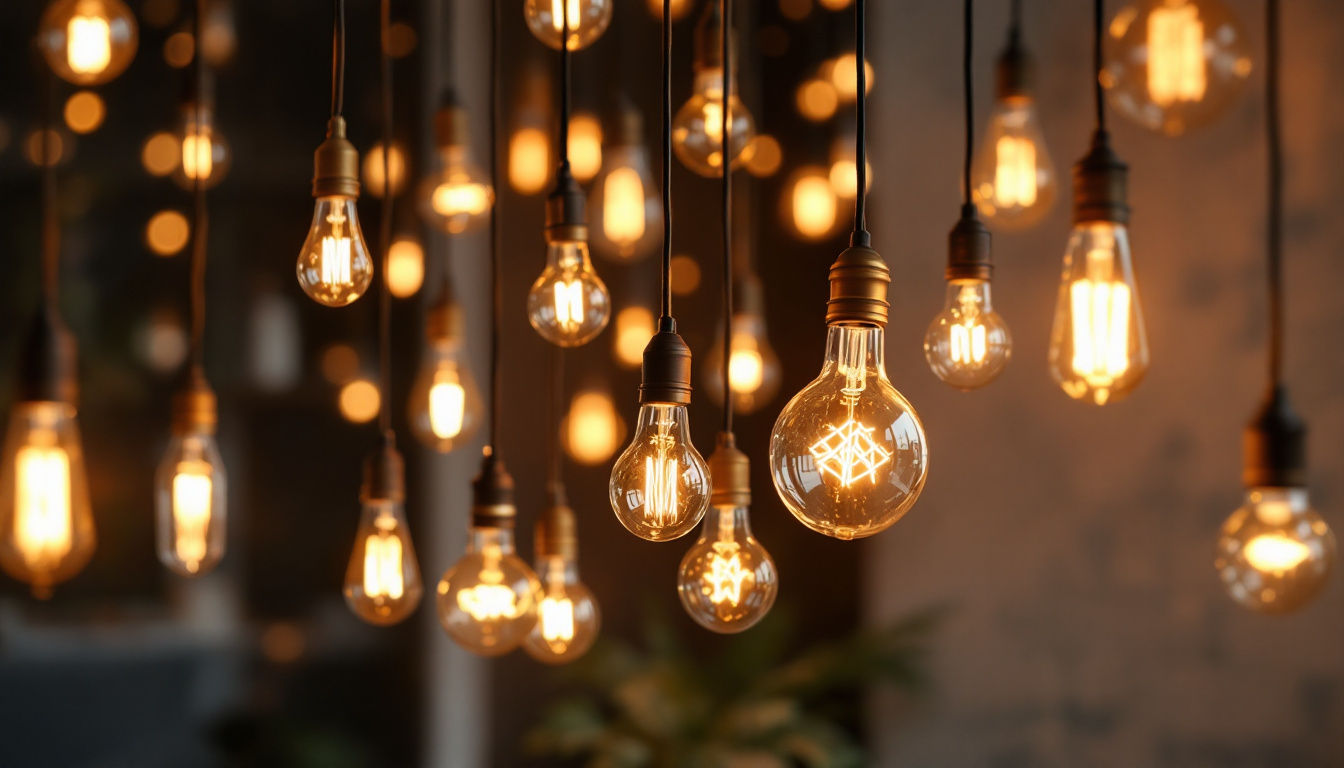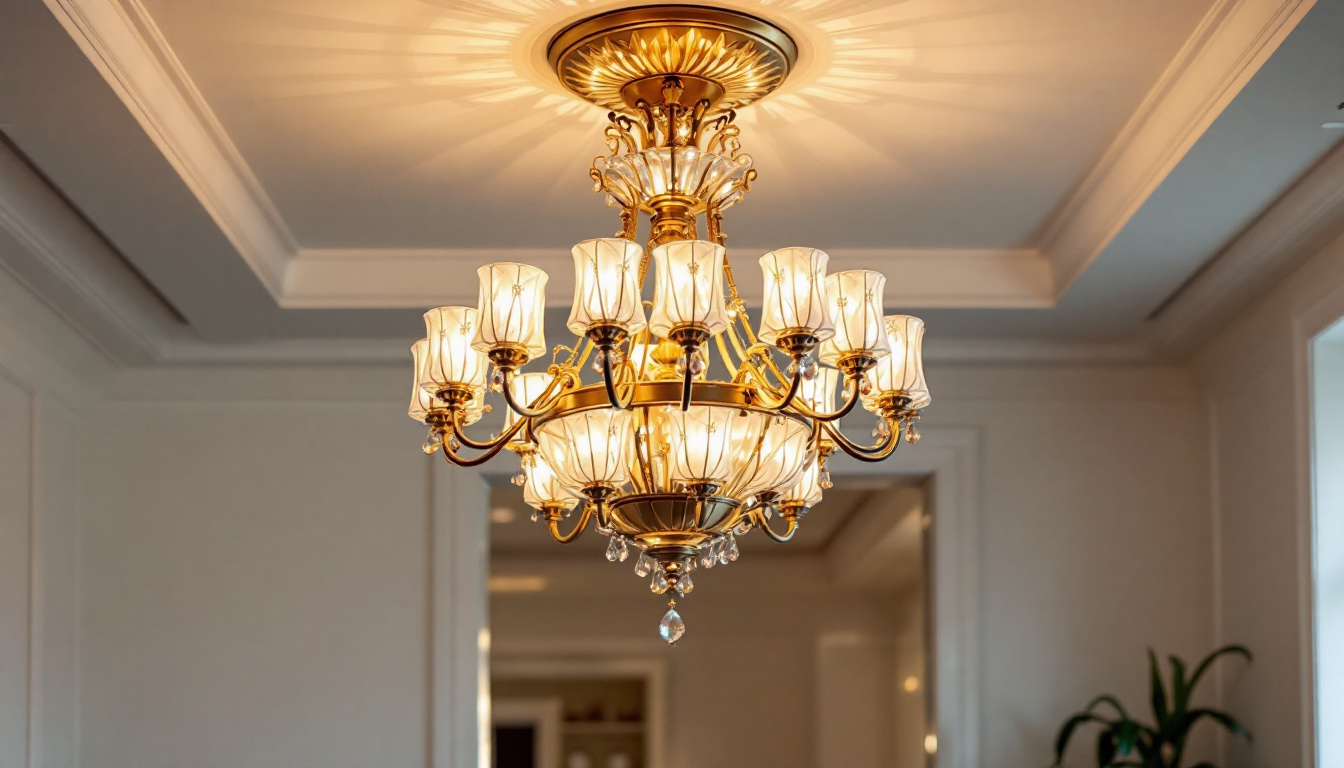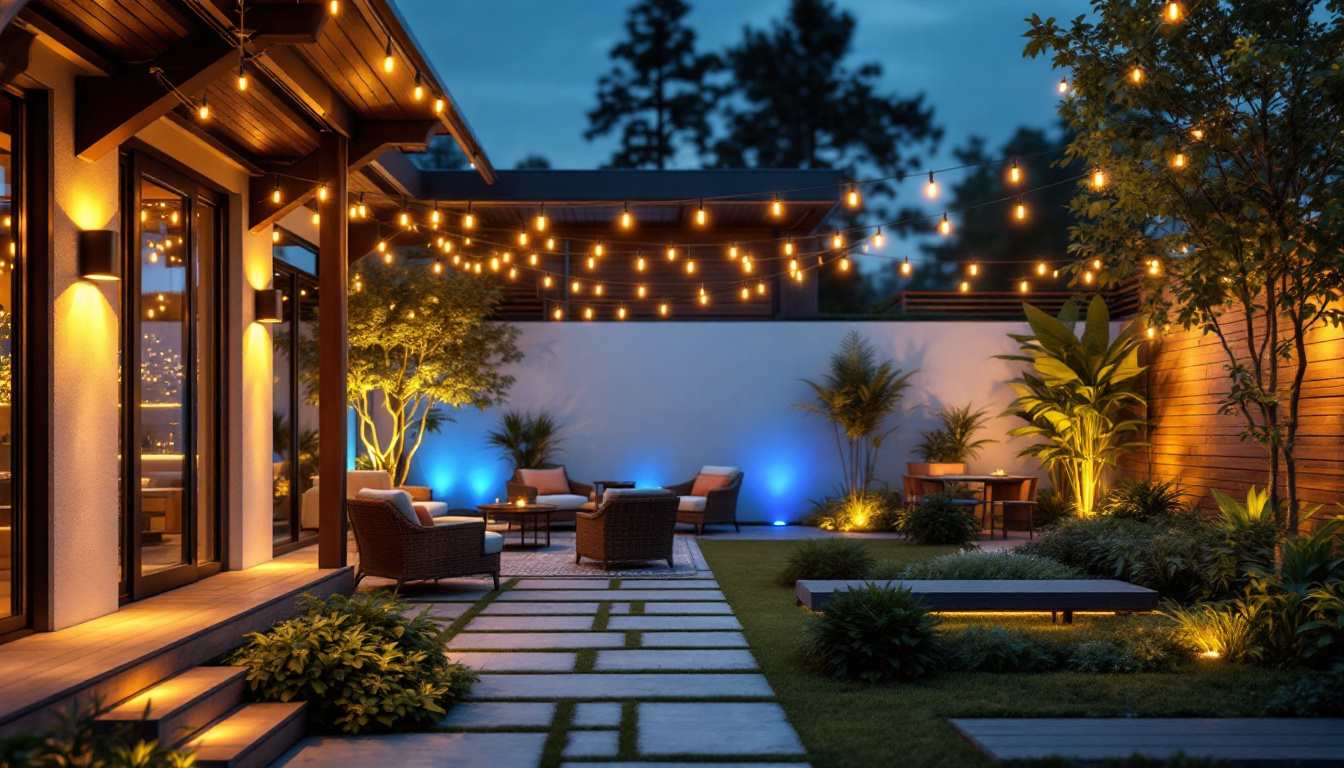
In the realm of outdoor lighting installations, pole lights serve as a crucial component that enhances both functionality and aesthetics. These lighting fixtures are not only essential for illuminating spaces but also play a significant role in ensuring safety and security. Understanding the importance of pole lights can help lighting contractors make informed decisions when designing and implementing outdoor lighting solutions.
Outdoor lighting is more than just a means to brighten up a space; it significantly impacts the usability and safety of outdoor areas. Properly designed lighting can transform a dark, uninviting area into a welcoming environment. This is particularly crucial for commercial properties, public spaces, and residential areas where visibility is key.
One of the primary reasons for installing outdoor lighting is to enhance safety and security. Well-lit areas deter criminal activity and provide peace of mind for residents and visitors alike. Pole lights, strategically placed around parking lots, walkways, and entrances, ensure that these spaces are visible at all times, reducing the risk of accidents and crime.
Moreover, adequate lighting helps prevent falls and other accidents that could occur in poorly lit areas. By illuminating pathways and staircases, pole lights contribute to a safer environment for everyone. This is especially important in commercial settings where foot traffic is high, and visibility is paramount. In addition to traditional lighting, integrating motion-sensor lights can further enhance security by automatically illuminating areas when movement is detected, providing an extra layer of protection for properties.
Beyond safety, outdoor lighting plays a pivotal role in creating ambiance. Pole lights can be designed to complement the architectural style of a property, enhancing its visual appeal. Whether it’s a modern design or a more traditional look, the right pole lights can elevate the overall aesthetic of an outdoor space.
Additionally, lighting can be used creatively to highlight landscaping features, sculptures, or architectural elements. This not only beautifies the space but also creates a welcoming atmosphere for guests and visitors. Lighting contractors can leverage pole lights to craft unique outdoor experiences that leave a lasting impression. For instance, using warm-toned lights can create a cozy, inviting feel for outdoor dining areas, while cooler tones may lend a more contemporary vibe to urban settings. The thoughtful placement of lights can also create shadows and depth, adding a dynamic quality to the landscape that changes throughout the evening.
Furthermore, outdoor lighting can be utilized to extend the usability of outdoor spaces well into the evening hours. Patios, gardens, and recreational areas can become vibrant social hubs with the right lighting design. By incorporating dimmable lights or smart technology, property owners can adjust the brightness according to the occasion, whether it’s a quiet family gathering or a lively party. This flexibility not only enhances the functionality of outdoor spaces but also encourages more outdoor activities, fostering a sense of community and connection among neighbors.
Understanding the various types of pole lights available is essential for lighting contractors. Each type serves different purposes and can be selected based on the specific needs of a project.
LED pole lights have gained popularity due to their energy efficiency and long lifespan. They consume significantly less energy compared to traditional incandescent or halogen lights, making them a cost-effective option for outdoor lighting installations. Furthermore, LED lights offer a variety of color temperatures, allowing contractors to choose the perfect hue for their projects.
Another advantage of LED pole lights is their durability. Designed to withstand harsh weather conditions, they require less maintenance over time. This is particularly beneficial for contractors looking to minimize ongoing service costs for their clients. Additionally, many LED pole lights come equipped with smart technology features, such as motion sensors and dimming capabilities, which can further enhance energy savings and provide tailored lighting solutions for different environments.
Solar pole lights represent an eco-friendly alternative to traditional lighting solutions. These lights harness solar energy during the day and illuminate outdoor spaces at night without relying on the electrical grid. This makes them an excellent choice for remote areas or locations where running electrical lines may be impractical.
In addition to their environmental benefits, solar pole lights are often easy to install and require minimal maintenance. However, it is essential to consider the geographical location and sunlight availability when selecting solar lights, as their performance can vary based on these factors. Many modern solar pole lights now feature advanced battery technology that allows them to store excess energy, ensuring reliable illumination even on cloudy days or during winter months when sunlight is scarce.
For projects that prioritize aesthetics, decorative pole lights can add a unique touch to outdoor spaces. These lights come in various styles, from vintage lanterns to sleek modern designs, allowing contractors to match the lighting with the overall theme of the property.
Decorative pole lights not only serve a functional purpose but also act as design elements that enhance the character of the environment. They can be used in parks, gardens, and public squares to create inviting and visually appealing spaces. Furthermore, many decorative options are designed with energy-efficient technologies, such as LED bulbs, ensuring that they not only beautify the surroundings but also contribute to sustainability efforts. Incorporating these lights into landscape designs can create focal points that draw attention and elevate the overall ambiance of outdoor areas, making them perfect for events and gatherings.
When selecting and installing pole lights, several factors must be taken into account to ensure optimal performance and satisfaction for clients.
One of the most critical aspects of outdoor lighting is ensuring adequate light distribution. Contractors must assess the area to determine the appropriate height and spacing of pole lights to achieve even illumination. Poorly distributed lighting can lead to dark spots, which can compromise safety and aesthetics.
Using photometric analysis tools can help contractors visualize how light will be distributed across the area. This analysis can guide decisions regarding the type and placement of pole lights, ensuring that all areas are sufficiently illuminated.
Lighting contractors must be aware of local regulations and codes governing outdoor lighting installations. These regulations often dictate the maximum height of pole lights, light pollution restrictions, and energy efficiency standards. Ensuring compliance not only avoids potential fines but also promotes responsible lighting practices.
Contractors should also consider the impact of lighting on the surrounding environment, including wildlife and neighboring properties. Implementing measures to mitigate light pollution, such as using shielded fixtures, can create a more harmonious relationship between outdoor lighting and the natural world.
Choosing durable materials and fixtures can significantly impact the longevity of pole lights. Contractors should consider the climate and environmental conditions of the installation site when selecting materials. For instance, coastal areas may require corrosion-resistant fixtures, while regions with heavy snowfall may need lights designed to withstand ice and snow accumulation.
Regular maintenance is also vital for ensuring the longevity of outdoor lighting systems. Contractors should establish a maintenance schedule that includes cleaning fixtures, checking for electrical issues, and replacing any damaged components. This proactive approach can help maintain the effectiveness and appearance of pole lights over time.
As technology continues to evolve, the future of pole lighting appears promising. Innovations in smart lighting, energy efficiency, and design are shaping the way outdoor lighting installations are approached.
Smart lighting technology allows for greater control and customization of outdoor lighting systems. Contractors can integrate sensors, timers, and remote controls to optimize lighting based on the time of day or occupancy levels. This not only enhances energy efficiency but also improves the overall user experience.
For example, motion sensors can automatically turn on lights when someone approaches, ensuring safety while conserving energy when the area is unoccupied. This level of flexibility can be particularly appealing to clients looking for modern, efficient lighting solutions.
As sustainability becomes increasingly important, innovations in energy-efficient lighting are paving the way for greener outdoor installations. New technologies, such as solar-powered lights and advanced LED systems, are helping to reduce energy consumption and carbon footprints.
Lighting contractors should stay informed about these advancements and consider incorporating them into their projects. Not only do energy-efficient solutions benefit the environment, but they can also lead to cost savings for clients in terms of energy bills and maintenance expenses.
Design trends in outdoor lighting are constantly evolving, influenced by architectural styles and consumer preferences. Contractors should be aware of current trends, such as minimalist designs, integrated lighting solutions, and the use of smart technology, to meet client expectations.
By staying ahead of design trends, lighting contractors can offer innovative and attractive solutions that resonate with clients. This not only enhances customer satisfaction but also positions contractors as leaders in the industry.
Pole lights are a critical element in outdoor lighting installations, serving essential functions that enhance safety, security, and aesthetics. By understanding the different types of pole lights, key considerations for installation, and emerging trends in the industry, lighting contractors can make informed decisions that ultimately benefit their clients.
As outdoor lighting continues to evolve with advancements in technology and design, the importance of pole lights will only grow. Contractors who embrace these changes and prioritize quality installations will be well-positioned to succeed in a competitive market. Investing in the right pole lighting solutions can lead to safer, more beautiful outdoor spaces that meet the needs of today and tomorrow.
Ready to enhance your outdoor lighting installations with the best pole lights on the market? Look no further than LumenWholesale, where we provide contractors with exceptional, spec-grade lighting products at unbeatable wholesale prices. Say goodbye to local distributor markups and hello to our premium selection that meets the highest industry standards. With free shipping on bulk orders, you can trust that you’re getting the most reliable and high-performance lighting solutions at the best value. Elevate your lighting projects today and experience the perfect blend of quality, affordability, and convenience. Visit LumenWholesale for Wholesale Lighting at the Best Value.

Discover why light bulb decoration is a crucial element for lighting contractors.

Discover expert tips and best practices for selecting and installing ceiling chandelier lamps from seasoned lighting contractors.

Discover expert insights from Ballard Light’s seasoned contractors as they illuminate the art and science of lighting design.

Discover how Leviton Manufacturing Co Inc empowers lighting contractors with innovative solutions, cutting-edge technology, and unparalleled support, driving success in the ever-evolving lighting industry..